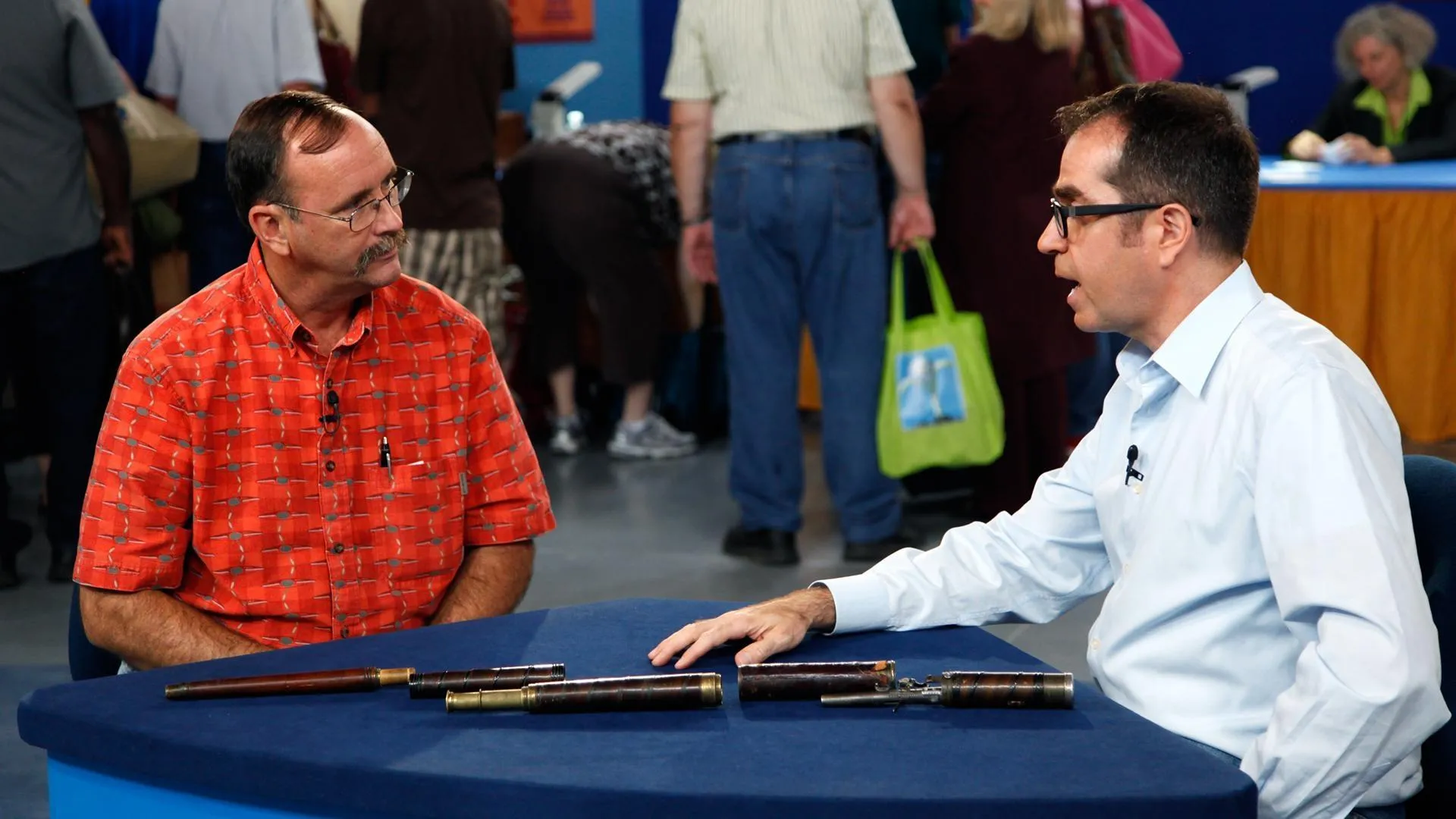GUEST: It's a 1936 Olympic torch. It was carried from Athens to Berlin, and this is the torch that was carried through Hungary. My late husband got it from the family of the person who carried it. He got it in probably Budapest. It was in a kitchen cupboard.
APPRAISER: That's a beautiful thing. It really has that art deco look, and, of course, from one of the most infamous Olympic Games...
GUEST: Yes.
APPRAISER: the Nazi games of 1936 in Berlin. Adolf Hitler wanted to show the superiority of the Aryan race.
GUEST: Yes.
APPRAISER: And Jesse Owens had something to say about that. He won four gold medals, of course-- the 100 meter, the 200 meter, the 4x100-meter relay and the long jump, and just became an American hero instantly. So it's a very legendary Olympic Games. This is a wonderful piece. It's polished stainless steel. This is the holder.
GUEST: Oh, okay.
APPRAISER: The actual torch, which is really cool, is in here too. And this is what's left. Generally, when you do see these, you don't see this piece with it. And the incendiary device would have been right up here.
GUEST: Okay.
APPRAISER: And it was attached to this wooden block here. Over 3,000 people actually carried torches during this relay.
GUEST: Oh, really?
APPRAISER: And it's the first time that they did this relay from Olympia, Greece, to Berlin. It was the first time that they carried it in the modern-day Olympic games.
GUEST: Oh.
APPRAISER: So that's pretty cool. Now, it was made by Krupp. And Krupp basically armed Nazi Germany.
GUEST: Oh, really?
APPRAISER: They were an armament company and they still do exist, and these were stainless steel that they created for this event. And they're just beautiful things, and very collectable. Everybody who carried a torch got one.
GUEST: Oh, really?
APPRAISER: So, yeah, it was a wonderful souvenir, but remember, this is before the war. And in war-torn countries, these things would be melted down. Stainless steel, steel was needed, so they're quite scarce today. And not too many turn up. In the last ten years, I know of maybe a dozen that have turned up.
GUEST: Oh, my.
APPRAISER: And this one is in beautiful condition. I would estimate it somewhere in the $3,000 to $5,000 range.
GUEST: Really?
APPRAISER: Absolutely. And it's just one of those classic pieces of sports memorabilia from one of the most interesting times.
GUEST: Wow.
APPRAISER: It's wonderful.
GUEST: I know, it's a pretty piece, but it's just been sitting on my dresser. I have a hat sitting on it.
APPRAISER: You have a hat sitting... (laughs)
GUEST: It makes a nice hat stand.








